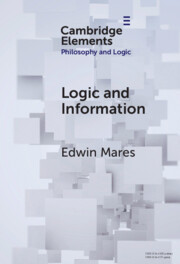Element contents
Logic and Information
Published online by Cambridge University Press: 20 May 2024
Summary
- Type
- Element
- Information
- Series: Elements in Philosophy and LogicOnline ISBN: 9781009466745Publisher: Cambridge University PressPrint publication: 13 June 2024
Bibliography
- 5
- Cited by

